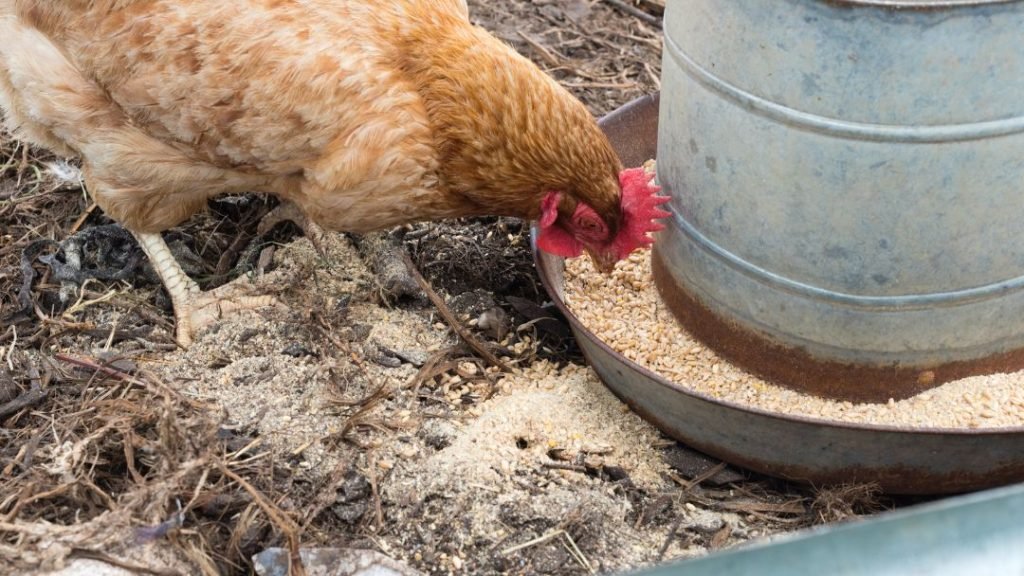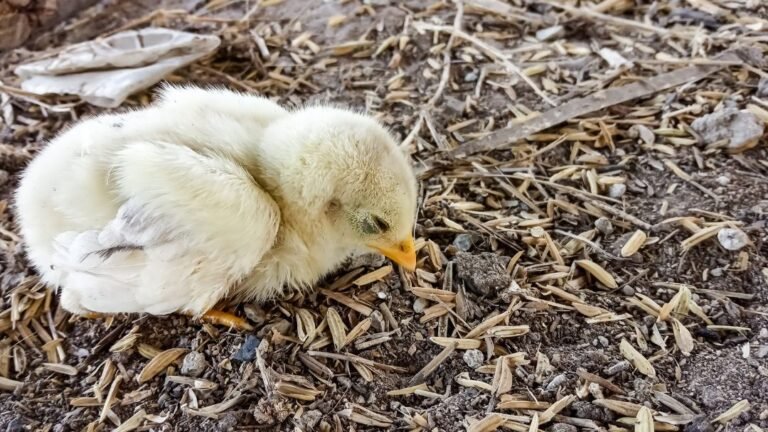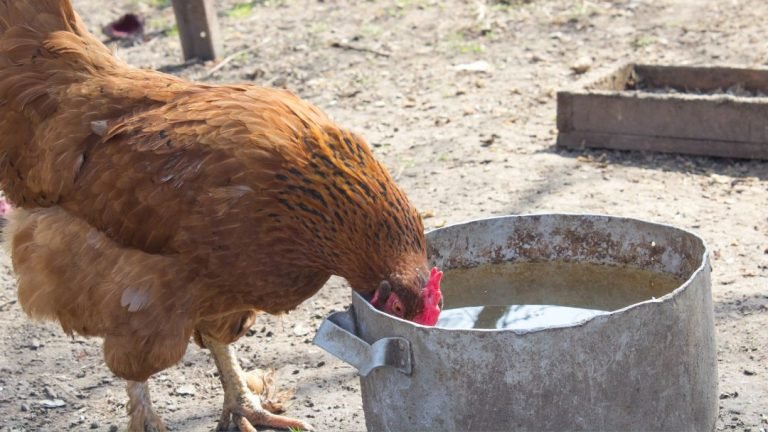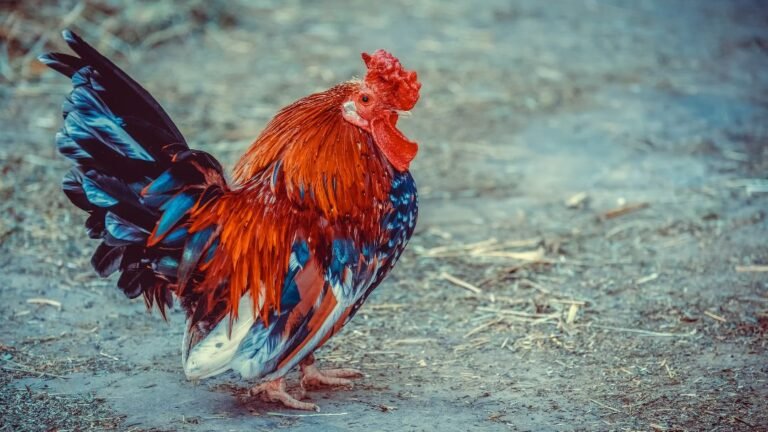A chicken feeder is a handy device to supply food to chickens. Most importantly, it allows flocks to continuously enjoy the feed whenever they are hungry and avoid unwanted food wastage. But how many chickens per feeder should you use?
It is a good rule of thumb to keep one medium or large-sized chicken feeder for every 10-15 chickens. However, it can be more or less depending on the feeder size, breed type, age, number of feeders, chickens’ eating frequency, their nature, and many other aspects.
How Many Chickens Per Feeder do You Need?
There is no strict rule regarding how many chickens a chicken keeper should use per feeder.
But, the most important thing is keeping enough feeder space for each flock, depending on their age and size.
According to researchers, the ideal feeding space for each chicken can be anywhere from 2.3 to either 4.6 or 6.9 cm.
Larger and older chooks will need more feeder space than smaller and younger ones.
On the other hand, smaller and younger ones will need less feeding space.
The following table shows how much space to keep for each bird.
| Age | Feeder Space |
|---|---|
| 0-3 Weeks | 1 inch |
| 3-7 Weeks | 1¾ inch |
| 7-12 Weeks | 3 inch |
| 12-18 Weeks | 3½ inch |
Depending on your chicken’s age and its ideal feeding space requirements, you can calculate how many birds can be fed from a single chicken feeder.

Factors Affecting How Many Chickens Per Feeder
You can’t randomly determine how many chickens per feeder you should use.
It requires you to consider some crucial aspects to maintain a harmonious environment.
Here are the following factors you should not overlook when determining how many chickens per feeder to use.
01. Feeder Size
Chicken feeders are available in various sizes. The larger the feeder size, the more chickens can eat at a time.
If you have more than 10 chickens, it must have at least 15 KG capacity.
But, a 10 KG chicken feeder appears to be enough for 5-10 flocks.
If you have only 3-5 chooks, a 2-3 KG food container is sufficient to feed them all.
| Number Of Chickens | Chicken Feeder Capacity |
|---|---|
| More Than 10 Chickens | 15 KG Capacity |
| 5-10 Chickens | 10 KG Capacity |
| 3-5 Chickens | 2-3 KG Capacity |
02. Breed Type
Which types of chickens do you grow in your backyard?
Raising heavier breeds like Rhode Island Red, Wyandotte, Plymouth Rock, Sussex, Orpington, etc., need a good number of feeder spaces.
Larger chicken feeders are better for this type of bird. You will have to use fewer feeders.
It will save space and appear more effective, especially when feeders are placed inside the coop.
But, medium-sized chickens such as Easter Egger, Salmon Faverolles, Dominique, etc., will need less space. You can feed more flocks in a single feeder.
03. Number Of Feeders
You may already have a few chicken feeders and have thought of buying a few new ones.
In such a case, add a few more to avoid overcrowding.
Chickens eat several times a day. They start eating whenever their crop is empty. Most chickens eat at 6-7 am after waking up.
If it is too crowded in the early morning for eating, weaker and shy flocks may have to wait until others finish eating.
Adding several new feeders along with the older ones will help you divide the feeders among the chickens.
You should aim to provide them with a good number of feeders so that all can eat simultaneously.
04. Chickens’ Eating Frequency
Ever wondered how many times your chickens eat a day?
An adult chicken eats at least two meals daily: one in the morning and the other in the evening.
Flocks may eat another one or two small portions of feed if they feel hungry.
Some chickens eat a lot at a time. Some eat a small portion every time and feed 3-4 times daily.
You must be aware of your chickens’ eating habits and add enough food until you refill them.
The feeders can’t be stayed empty. Track your birds’ eating frequency and add enough feeders to avoid overcrowding while they eat.
05. Chicken’s Nature
Chickens have distinct personalities. Some are aggressive, and some are calm and shy.
Old English Games, Modern Games, American Games, Cornish (Indian Games), etc., are the most aggressive and fearless flocks.
In contrast, Ameraucana, Cochin, Australorp, Brahma, Buff Orpington, Plymouth Rock Bantam, etc. quiet, shy, and a bit fearful breeds.
Feeding both types of chickens might be a bit complicated as aggressive flocks will always try to dominate over the quiet ones.
Sometimes, fearless chickens may start biting quiet birds to prevent them from eating. It will affect their overall health.
You want to keep additional feeders to serve food separately in such a case. It will prevent conflict issues.
More importantly, all birds will get sufficient food and stay healthy and active.
06. Chicken Feeders’ Holes
A chicken feeder comes in various designs.
They have either a few holes or some dividers to let eat several chickens at a time.
Larger chicken feeders have more holes to let many birds enjoy the food at a time.
Some have massive compartments. Each one can let 2-3 flocks eat at a time.
Before choosing a particular type of feeder, you must determine how many chickens can enjoy food from each hole.
If it is one-for-one, you need more food pots to provide enough feeding space for each flock.
Should You Choose Large, Medium, Or Smaller Chicken Feeders?
One of the most crucial aspects is determining where you will install the chicken feeders.
Larger chicken feeders come in handy if you want to install them inside the coop.
Adding 5-6 food pots inside the flock house will cover a large amount of space. It will reduce the running room.
Instead, you can set up 2-3 chicken feeders to serve 20-30 birds. This will save your chicken coop space.
But, if you want to install feeders outside the chicken coop, small and medium-sized options come in handy. It is more appropriate if you have a good collection of a variety of breeds.
You may need to add more than average chicken feeders. However, it is worth the investment to give shy chickens personal space and allow them to enjoy food peacefully.
One important to remember is to keep the chicken feed safe from rats, wild birds, and other predators. Otherwise, they will steal food and even make the feed poisonous.
How Does Feeding Space Affect Chickens Growth?
You must be growing chickens either for meat or egg production, right?
Regardless of the reason, ensuring enough feeding space is crucial to let chooks eat enough food every day.
An adult chicken needs around 120 grams of layers pellets daily. If they don’t eat enough food, it will cause different health issues.
More importantly, their overall meat and egg production will be reduced.
Insufficient feeder space may cause competition. Heavier and aggressive chickens will show domination over the smaller and weaker ones.
All chickens must have access to the feed simultaneously, especially in the early morning.
You want to treat all flocks equally to ensure their optimal health growth and keep them illness-free.
Here is a small table of ten weeks of chickens and their feeding details based on real data.
| Feeder Space, Inches Per Chick | 1.0 | 1.5 | 2.0 | 4.0 |
|---|---|---|---|---|
| Body weight, lbs. | 3.73 | 3.84 | 3.83 | 3.80 |
| Feed consumption, lbs. | 9.06 | 9.33 | 9.27 | 9.19 |
| Feed conversion | 2.43 | 2.43 | 2.42 | 2.42 |
| C. V., % | 8.7 | 8.7 | 8.6 | 8.9 |
| Mortality, % | 2.3 | 2.7 | 2.3 | 1.9 |
What Type Of Feeders Is Better For Chickens?
One of the most widely used chicken feeders is a treadle, or automatic feeder, especially for large numbers of chickens.
It has simple functionality. Chickens have the accessibility to food anytime they feel hungry.
Flocks will have better healthy growth and lay eggs on time and regularly.
Besides, you will save feed costs as there is nothing to worry about regarding feed spillage. Pests and rats won’t come to steal the food.
Other chicken feeders are also available, such as open-spaced feeders, Hopper feeders, PVC feeders, etc.
Open-style chicken feeders usually look like a bowl. They are perfect for serving 2-3 flocks. This type of food container is cheap, but they are prone to waste a lot of food.
Tips For Choosing Chicken Feeders
- Be watchful and closely inspect your chickens’ feeding habits and personalities.
- When installing chicken feeders outside the chicken coop, ensure the food doesn’t become dirty, spoiled, or poisonous.
- Avoid refilling too much food for excessively larger containers. The feed loses its freshness over time when the surrounding air gets into it.
- Add a few fresh raspberry or blackberry leaves as salads to make the meals tastier.
- Keep the waterer and feeder at least a few feet away to avoid wetting the dry food.
Summing Up
Are you still wondering how many chickens per feeder you can use? Your main goal should be creating a balanced environment and letting all flocks enjoy food.
Avoid letting them starve. Most chickens eat pellets several times throughout the day. Regularly inspect your flocks’ behavior to figure out whether they are not eating properly.
Make sure to add extra chicken feeders whenever you introduce new chickens. Watch out for how they respond when you serve food.
You may need to use a different chicken feeder if they are not eating from the particular feeder. Make sure to train them to use automatic chicken feeders properly.





